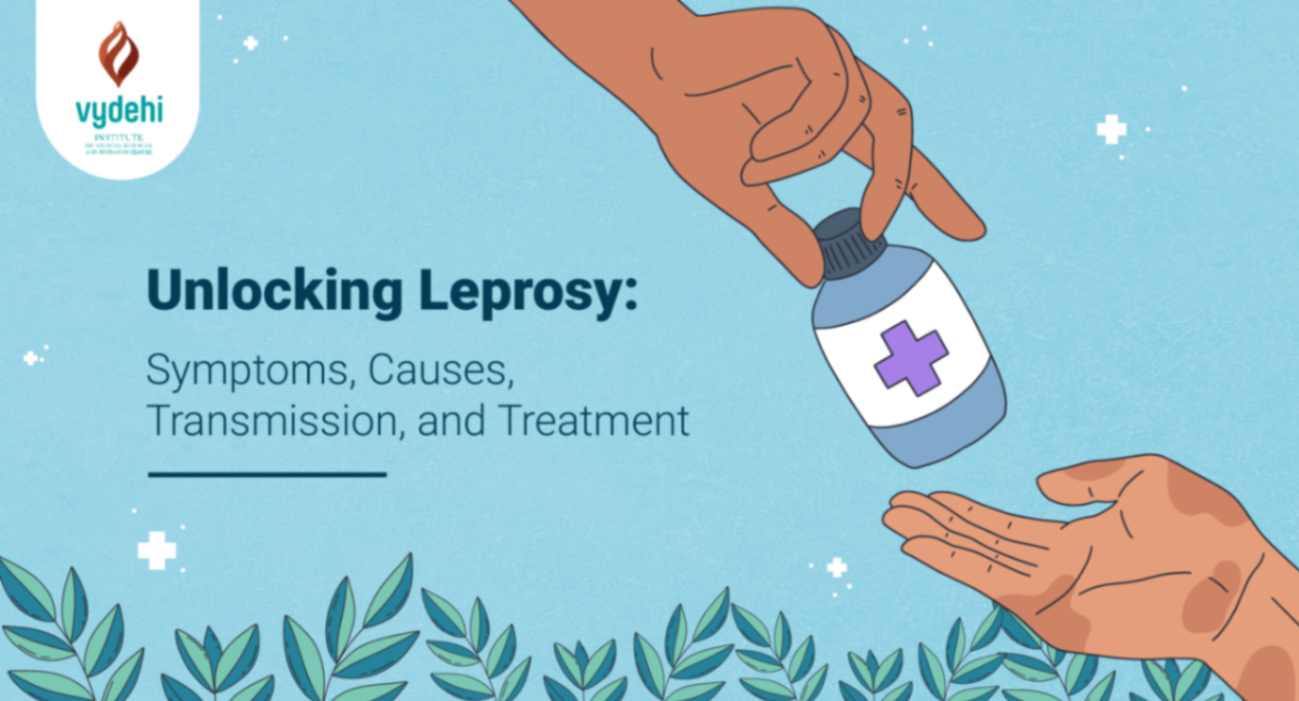

Leprosy, also known as Hansen’s disease, has a rich historical significance. Originating from ancient times, it has been surrounded by myths and misconceptions. Gerhard Armauer Hansen’s groundbreaking discovery of the causative agent, Mycobacterium leprae, in the late 19th century revolutionized our understanding of the disease. Despite medical advancements, Leprosy continues to affect millions worldwide, particularly in regions with poor access to healthcare.
Symptoms of Leprosy
Leprosy symptoms vary widely, ranging from mild to severe manifestations. Common physical symptoms include:
These symptoms often go unnoticed initially, contributing to delayed diagnosis. Less common symptoms encompass eye problems, such as blurred vision, and nasal congestion due to nasal mucosa involvement.
The primary cause of Leprosy is the bacterium Mycobacterium leprae. This slow-growing, acid-fast bacillus targets skin and peripheral nerves, leading to characteristic symptoms. Additionally, genetic predisposition plays a crucial role, with certain genetic markers increasing susceptibility to the disease. Furthermore, an individual’s immune response influences the severity and progression of Leprosy.
Dispelling misconceptions is crucial in understanding Leprosy transmission. Contrary to popular belief, the disease is not highly contagious. Transmission occurs primarily through respiratory droplets expelled during close and prolonged contact with untreated individuals. The long incubation period, which can last years, contributes to the low transmission rate.
Hansen’s disease, named after the Norwegian scientist Gerhard Armauer Hansen, underscores the significance of his groundbreaking work. Hansen’s discovery of the causative agent, Mycobacterium leprae, marked a pivotal moment in medical history. Renaming Leprosy as Hansen’s disease not only honors his contribution but also shifts focus from stigma to scientific understanding.
Understanding Leprosy’s contagiousness is essential for dispelling fear and stigma. While Leprosy is moderately contagious, it is not easily transmissible. The low transmission rate is attributed to various factors, including the bacillus’ limited viability outside the human body and the host’s immune response. Transmission primarily occurs through prolonged close contact with untreated individuals.
The question of Leprosy’s curability is nuanced. While it is treatable, complete eradication of the bacteria may not always be possible. Multidrug therapy (MDT), consisting of antibiotics such as rifampicin, dapsone, and clofazimine, forms the cornerstone of treatment. MDT effectively kills the bacteria and prevents relapses, significantly improving patients’ quality of life.
Leprosy treatment encompasses a multidisciplinary approach aimed at managing symptoms and preventing complications. Antibiotics target the bacterial infection, halting disease progression and reducing transmission. Additionally, supportive therapies, including physical rehabilitation and wound care, address nerve damage and skin lesions, improving patients’ overall well-being.
The development of Hansen’s disease is influenced by various factors, including genetics, immune response, and environmental conditions. Genetic predisposition, particularly certain human leukocyte antigen (HLA) alleles, increases susceptibility to infection. Moreover, environmental factors such as poverty and overcrowding contribute to disease prevalence in endemic regions.
In conclusion, understanding Leprosy is essential for effective management and prevention. Despite its historical stigma, medical advancements have transformed Leprosy from a dreaded disease to a manageable condition. Early diagnosis, access to treatment, and destigmatization are crucial in combating Leprosy. Let us strive for compassion, knowledge, and solidarity in the fight against this ancient ailment.
Explore more about Leprosy and its management at Vydehi Institute of Medical Sciences and Research Center. Early detection saves lives!
What are the 3 main symptoms of leprosy?
Ans: Diagnosing leprosy involves identifying at least one of the key indicators: (1) clear absence of sensation in a pale (hypopigmented) or reddish skin area; (2) thickened or enlarged peripheral nerve accompanied by loss of sensation and/or muscle weakness in the affected area; (3) microscopic detection of bacilli in a slit-skin smear.
Ans: Leprosy, a chronic infectious condition, arises from the bacterial infection Mycobacterium leprae. This ailment impacts various bodily regions, including the skin, peripheral nerves, mucosa of the upper respiratory tract, and the eyes.
Ans: The transmission of Leprosy occurs through prolonged, close contact with untreated individuals, potentially when a person with Hansen’s disease coughs or sneezes, releasing bacteria-containing droplets that are inhaled by healthy individuals.
The information included here is only for knowledge-sharing purposes, and the blog is not intended to be a substitute for diagnosis, medical advice, or treatment by a healthcare professional. Every individual needs advice based on diagnosis and evidence, hence the reader should consult their doctor to determine the disease and any treatment must be taken under appropriate medical guidance.


 Emergency Number
Emergency Number
কুষ্ঠ রোগের লক্ষণ, কারণ ও চিকিৎসার উপর এই বিস্তারিত গাইডটি খুবই তথ্যবহুল। এখানে আলোচনা করা হয়েছে যে কুষ্ঠ রোগ কেন হয়, এবং এটি কীভাবে নির্ণয় ও চিকিত্সা করা হয়। এই রোগের সম্পর্কে সঠিক তথ্য জানা জরুরি, কারণ এটি অনেকের মনে ভীতি সৃষ্টি করে। এই নিবন্ধটি সত্যিই সহায়ক, এবং আমি সবাইকে এটি পড়ার পরামর্শ দেব।